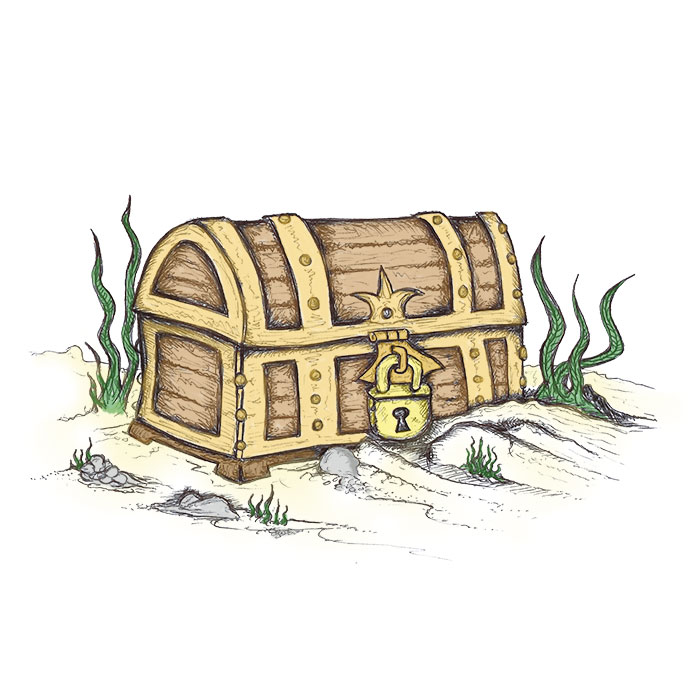Terminal Adventure #
This lab will explore one of the most important tools we’ll use all year: the Terminal. The Terminal is what we’ll use to navigate our file system, run code files, install software, and do all kinds of other tasks.
👾 💬 Windows UsersWindows users should use Powershell wherever it says Terminal.
You may see more information output than your Mac peers, but all commands should work the same.
[0] Setup #
First, we want to make some folders to store our work. Do this we’ll be using these three commands:
| Command | What it does |
|---|---|
ls | List what’s in the current directory (folder). |
mkdir | Make a new directory (folder) |
cd folder | Go to folder |
cd .. | Go up one to the previous folder |
💻 Open Terminal and use ls to list out all the files at your current location.
ls
👀 You should see something like this.
Applications Downloads Pictures
Creative Cloud Library Public
Desktop Movies
Documents Music
💻 Then, use cd to change directories to your Desktop. A directory is just a fancy word for a folder.
cd Desktop
💻 Use the mkdir command to make a directory called making_with_code.
mkdirstands for make directory.
mkdir making_with_code
💻 Use ls to check the folder was created.
ls
💻 Use cd to enter your new making_with_code directory.
cd making_with_code
💻 Make a unit00_drawing directory. This will store your files for our first unit.
mkdir unit00_drawing
💻 Go into the unit00_drawing folder
cd unit00_drawing
💻 Run the following command in your terminal to clone today's lab.
This will make a copy of the code on your own computer. This uses something called git and Github, you will learn more about this later this unit.
git clone https://github.com/the-isf-academy/lab_terminal_adventure.git
cd lab_terminal_adventure
💻 Next, we enter the Poetry shell. This will ensure all of the correct packages and versions of those packages are being used.
You will use
poetry shell, everytime you want to work on a lab or project.
poetry shell
You should see the following output:
Creating virtualenv lab-00-terminal-adventure-shGU1wL6-py3.10 in /Users/eqbrown/Library/Caches/pypoetry/virtualenvs Spawning shell within /Users/eqbrown/Library/Caches/pypoetry/virtualenvs/lab-00-terminal-adventure-shGU1wL6-py3.10 bash-5.1$ . /Users/eqbrown/Library/Caches/pypoetry/virtualenvs/lab-00-terminal-adventure-shGU1wL6-py3.10/bin/activate (lab-00-terminal-adventure-shGU1wL6-py3.10) bash-5.1$
👾 💬 Exiting the poetry shellWhen you want to exit the shell, you can type
exitor^D
📁 Your folders are now all properly setup for cs!
[1] Starting your Adventure #
💻 If you left the poetry shell, make sure you enter it again.
poetry shell
💻 Let’s have a look at what’s in the lab_terminal_adventure repository with ls. A repository is just a fancy word for a folder that is stored in the cloud using a version control software.
ls
💻 Run it to see what happens:You should see the following output:
adventure returnToShip.py poetry.lock pyproject.toml
returnToShip.pyis a runnable Python file (you can tell by the.pyat the end).
python returnToShip.py
You should see the following output:
Your adventure has only just begun. You are not yet ready to return to the ship. More secrets await you in the ocean's depths.
👾 💬 Your challenge is to see if you can get the treasure, using just the TerminalUse Terminal to explore the contents of the
adventuredirectory.
💻 Begin by going into into the
adventure directory:
cd adventure
ls
You should see the following output:
seafloor sinking.txt
sinking.txt is a text file, so we can read it.
💻 Try using the cat command:
cat sinking.txt
💻 Continue exploring into the depths of the sea to find the treasure! Return to the lab_00_terminal_adventure directory and run the returnToShip.py file to see if you were successful. If you were unable to escape the monster, try again!

Terminal Commands #
Below are some Terminal commands which might come in handy on your adventure.
| Command | What it does |
|---|---|
ls | List what’s in the current directory. |
cd ~ | Go to your home directory |
cd folder | Go to folder |
cd .. | Go up a level in your directory system. |
open file.txt | Opens file.txt with its default program |
cat file.txt | Prints out the contents of file.txt |
python x.py | Runs the Python program x.py |
mv old.txt new.txt | Renames a file from old.txt to new.txt. Also works for directories. |
mv file.txt dir | Moves a file to directory dir. |
mv dir1 dir2 | Moves dir1 to dir2 or renames if dir2 doesn’t exist. |
mv dir1 .. | Moves dir1 up a level in your directory system. |
cp old.txt new.txt | Copy a file from old.txt to new.txt. |
mkdir bag | Creates a new directory called bag |
pwd | Prints the path to where you are in the filesystem |
rm file.txt | removes (deletes) the file file.txt |
rm -d dir | removes (deletes) the directory dir |
rm -r dir | recursively removes (deletes) the directory dir and all subdirectories and files within that directory. Be careful, this is a powerful tool! |
[2] Deliverables #
⚡✨ You will end this lab by collecting the treasure!✔ Once you’ve successfully completed the adventure be sure to fill out this Google form.
👾 💬 Exiting the poetry shellRemember, when you want to exit the shell, you can type
exitor^D
[3] Extension #
💻 Once you finish the Terminal Adventure, you may either explore Vim OR continue exploring drawing with the Python Turtle library.
Vim #
Vim is text-editor that you can use to write code directly inside your Terminal. Ms. Brown or Ms. Genzlinger may have used vim to activate Poetry on your computer.
💻 To learn vim, in your Terminal type:
You can create a new
tabin your terminal with⌘+t
vimtutor
Vimtutor is a built in tutorial for learning vim.
Python Turtle #
💻 Go to bit.ly/day1_cs9 and continue experimenting with Python code. Can you figure out how to:
- draw a polygon of any number of sides? (triangle, hexagon, etc.)
- draw the olympic rings
- draw a bullseye